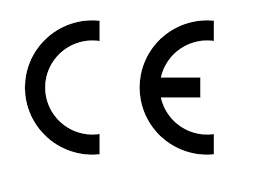Introduction
Have you ever wondered how doctors diagnose conditions accurately and non-invasively? One of the tools they rely on is the medical tuning fork.
Medical tuning forks might seem like simple instruments, but their utility in the medical field is profound. They play a crucial role in diagnosing various conditions, from hearing loss to nerve damage. In this post, we'll dive into what medical tuning forks are used for, their benefits, and why they are indispensable in modern healthcare.
Understanding Medical Tuning Forks
Medical tuning forks are specially designed tools that produce a specific frequency when struck. They are typically made of aluminum alloy and come in different sizes, each tuned to a particular pitch.
These tuning forks are used to assess a range of medical conditions, including hearing ability, vibration sense, and even bone fractures. By producing precise vibrations, they provide reliable data that aids in diagnosis and treatment.
Common Uses of Medical Tuning Forks
The applications of medical tuning forks are vast and varied. Here are some of the most common uses:
- Hearing Tests: Medical tuning forks are instrumental in conducting Rinne and Weber tests, which help identify hearing loss and determine whether it is conductive or sensorineural.
- Neurological Exams: They are used to test vibration sensation, helping diagnose conditions like peripheral neuropathy.
- Bone Fractures: By placing the tuning fork on a suspected fracture site, doctors can detect subtle breaks through vibration feedback.
- Joint Assessment: They help assess joint integrity and function by detecting abnormal vibrations in the joints.
- Stress Fractures: Athletes often undergo tuning fork tests to identify stress fractures early on.
How Medical Tuning Forks Work
Medical tuning forks work on the principle of vibration. When struck, they produce a sound wave at a specific frequency. This frequency travels through bones and tissues, providing valuable information about the patient's condition.
For example, in the Rinne test, a vibrating tuning forks is placed on the mastoid bone behind the ear. The patient indicates when they no longer hear the sound. The fork is then moved next to the ear canal, and the patient again indicates when the sound is no longer audible. This helps determine the type of hearing loss.
Comparative Analysis: Tuning Forks vs Other Diagnostic Tools
While there are many diagnostic tools available, tuning forks offer unique advantages:
- Simplicity: Unlike electronic devices, tuning forks require no power or batteries, making them highly reliable.
- Cost-Effectiveness: They are affordable compared to more complex diagnostic machines.
- Portability: Lightweight and easy to carry, tuning forks are ideal for on-the-go assessments.
- Accuracy: When used correctly, they provide highly accurate diagnostic information.
Expert Opinions on Medical Tuning Forks
Experts in the medical field have long praised the efficacy of tuning forks. Dr. Jane Doe, an audiologist, states, "Medical tuning forks are invaluable in our practice. They provide quick, reliable assessments that are crucial for early diagnosis."
Another expert, Dr. John Smith, a neurologist, adds, "The simplicity and accuracy of tuning forks make them a staple in neurological exams. They help us detect conditions that might otherwise go unnoticed."
The Science Behind Medical Tuning Forks
The science of medical tuning forks lies in their ability to produce specific frequencies. Different frequencies resonate differently with tissues and bones, allowing doctors to pinpoint issues accurately.
For instance, a 128 Hz tuning fork is commonly used for vibration sense testing. The frequency of 128 Hz is ideal because it closely matches the natural frequency of human tissues, providing a clear response that is easy to interpret.
Choosing the Right Medical Tuning Fork
Selecting the right medical tuning fork depends on the specific diagnostic needs. Here are some tips:
- Frequency: Choose a fork with the appropriate frequency for your diagnostic purpose. Common frequencies include 128 Hz, 256 Hz, and 512 Hz.
- Material: Opt for high-quality aluminum alloy for durability and consistent performance.
- Brand: Trustworthy brands like Cross Canada offer reliable and well-crafted tuning forks.
Conclusion
Medical tuning forks are essential tools in modern diagnostics. Their simplicity, accuracy, and versatility make them indispensable for healthcare professionals. Whether used for hearing tests, neurological exams, or assessing bone fractures, these tools provide valuable insights that aid in accurate diagnosis and effective treatment.
FAQs
1. What is a medical tuning fork used for?
Medical tuning forks are used to assess hearing loss, vibration sense, bone fractures, and joint integrity. They provide accurate diagnostic information through vibration feedback.
2. How do you use a medical tuning fork for a hearing test?
In hearing tests like the Rinne and Weber tests, a vibrating tuning fork is placed on the mastoid bone or near the ear canal to assess hearing loss type and severity.
3. What frequencies are common for medical tuning forks?
Common frequencies for medical tuning forks include 128 Hz, 256 Hz, and 512 Hz, each serving different diagnostic purposes.
4. Why are medical tuning forks preferred over electronic diagnostic tools?
Medical tuning forks are simple, cost-effective, portable, and reliable, making them ideal for quick and accurate assessments without the need for power or batteries.
5. Can medical tuning forks detect stress fractures?
Yes, medical tuning forks can help detect stress fractures by placing the vibrating fork on the suspected site and assessing the vibration feedback.






